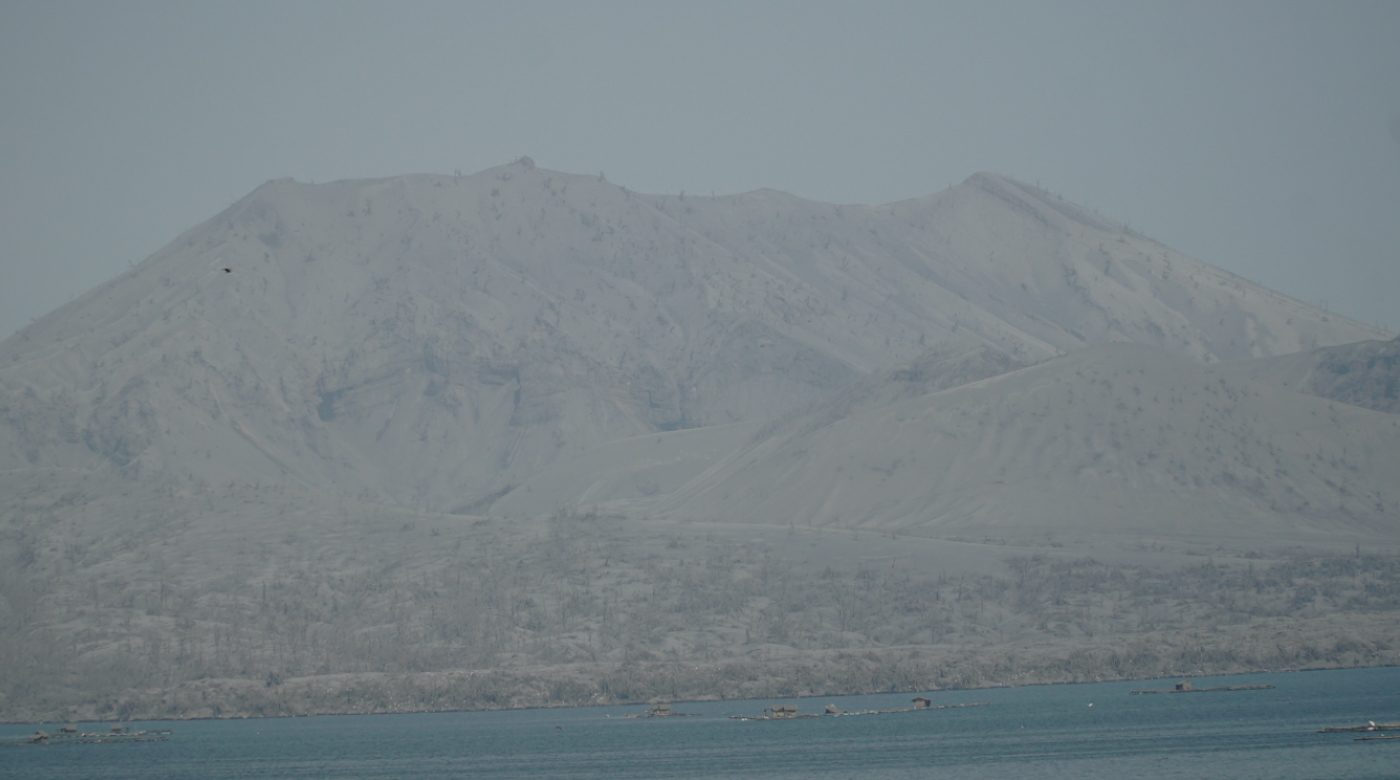SUMMARY
This is AI generated summarization, which may have errors. For context, always refer to the full article.

MANILA, Philippines – Alert Level 3 stayed raised for Taal Volcano in the province of Batangas on Friday, January 31, the last day of what has been a long and difficult month for hundreds of thousands of people who have been affected.
The Philippine Institute of Volcanology and Seismology (Phivolcs) said on Friday morning that the Taal Volcano Network recorded 116 volcanic earthquakes, including 2 low-frequency events, in the past 24 hours.
Low-frequency quakes are “caused by cracks resonating as magma and gases move toward the surface,” according to the United States Geological Survey.
The latest figure is slightly down from the 137 volcanic earthquakes recorded by the Taal Volcano Network in the previous 24-hour period.
The Taal Volcano Network can record small earthquakes undetectable by the Philippine Seismic Network, which covers the whole country.
The Philippine Seismic Network has plotted 763 volcanic earthquakes at Taal since 1 pm of January 12, when the unrest began. Of these, 177 were magnitudes 1.2 to 4.1 and were felt at Intensities I to V.
“These earthquakes signify magmatic activity beneath the Taal edifice that could lead to eruptive activity at the main crater,” Phivolcs reiterated on Friday.
Taal has been on Alert Level 3 since the morning of January 26. Before that, it was on Alert Level 4 for two weeks, beginning the evening of January 12.
Phivolcs is applying a two-week observation period before it can downgrade the volcano’s status further. Within that period, parameters such as volcanic earthquakes and gas emissions, among others, must go down.
In the past 24 hours, Phivolcs observed “moderate emission of white to dirty white steam-laden plumes 500 to 700 meters tall” coming from Taal’s main crater. This is compared to only “weak emission” of plumes that were 300 to 500 meters tall in the previous 24-hour period.
The level of sulfur dioxide (SO2) remains “below instrumental detection” or too low to be detected. SO2 is a major gas component of magma.
But Phivolcs Director Renato Solidum Jr said on Thursday, January 30, that magma is just around 5 kilometers below Taal’s crater, seemingly “parked” there. The big question now is whether the magma will rise further and cause a major eruption or not.
Phivolcs maintained that these are possible under Alert Level 3:
- sudden steam-driven and even weak phreatomagmatic explosions
- volcanic earthquakes
- ashfall
- lethal volcanic gas expulsions
Taal Volcano Island; the barangays of Bilibinwang, Subic Ilaya, and Banyaga in Agoncillo; and the barangays of Gulod, Buso-Buso, and Bugaan East in Laurel remain on lockdown.
These areas are within a 7-kilometer radius from the main crater, which is Phivolcs’ recommended danger zone while Taal is under Alert Level 3.
“Local government units are advised to assess areas outside the 7-kilometer radius for damage and road accessibilities and to strengthen preparedness, contingency, and communication measures in case of renewed unrest,” reminded Phivolcs.
The highest possible status is Alert Level 5. It would mean that a hazardous eruption is already in progress.
The ongoing Taal eruption has affected at least 125,614 families or 467,890 persons in Batangas, Quezon, Laguna, and Cavite, said the National Disaster Risk Reduction and Management Council on Friday.
Of those affected, 18,226 families or 63,574 persons remain in evacuation centers.
The eruption has also caused at least P3.2 billion worth of damage to agriculture in Batangas, Cavite, and Laguna, as well as P137.16 million worth of damage to infrastructure in Batangas. (WATCH: Cavite coffee farmers struggle to rise from the ashes) – Rappler.com
Add a comment
How does this make you feel?
There are no comments yet. Add your comment to start the conversation.